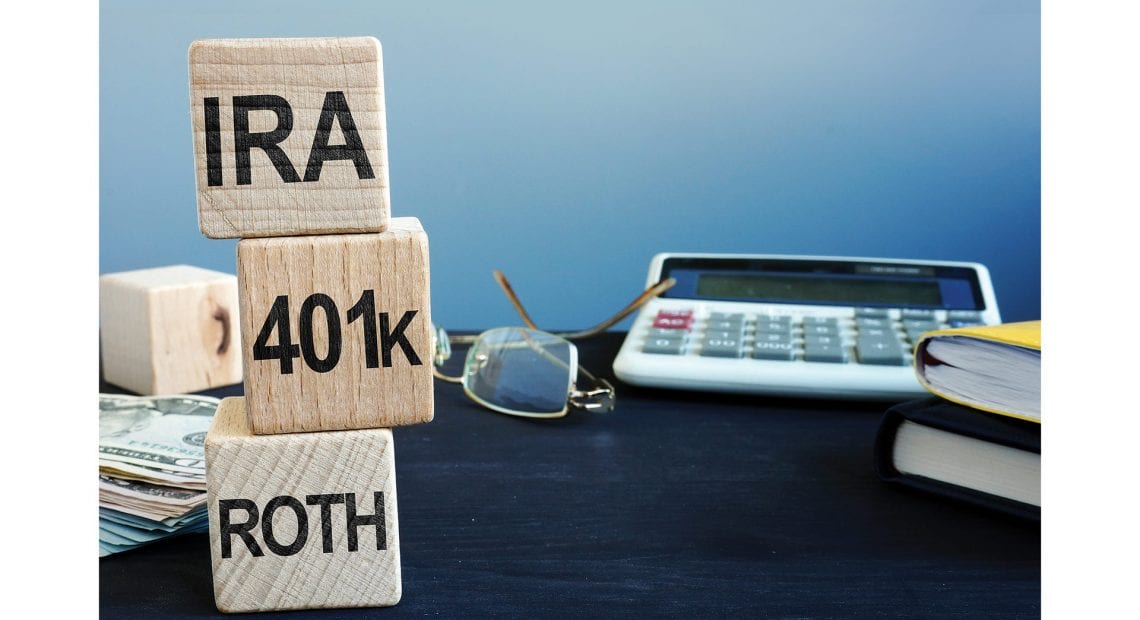
Taxpayers Given Relief with Retirement-plan Loans, Distributions
By All Accounts
By Jim Moran CPA, MST

Jim Moran CPA, MST
The Coronavirus Aid, Relief, and Economic Security (CARES) Act has provided taxpayers affected by COVID-19 with some relief in the area of retirement-plan distributions and loans.
A coronavirus-related distribution is allowed by a qualified individual from an eligible retirement plan made from Jan. 1, 2020 to December 31, 2020, up to an aggregate amount of $100,000. A qualified individual must meet one of these criteria:
• Diagnosed with the virus SARS-CoV-2 or with the coronavirus disease 2019 (COVID-19) by a test approved by the Centers of Disease Control and Prevention (CDC);
• Spouse or dependent is diagnosed with SARS-CoV-2 or COVID-19 by a test approved by the CDC;
• Experienced adverse financial consequences as a result of being quarantined, furloughed, laid off, having work hours reduced, or being unable to work due to lack of childcare due to SARS-CoV-2 or COVID-19; or
• Experienced adverse financial consequences as a result of closing or reducing hours of a business that is owned or operated by the individual due to the SARS-CoV-2 or COVID-19.
An ‘eligible retirement plan’ is defined as the type of plan that is eligible to accept tax-free rollovers. It includes 401(k) plans, 403(b) plans, governmental 457 plans, and IRAs (including SEP-IRAs and SIMPLE-IRAs). It does not include non-governmental 457(b) plans. The $100,000 withdrawal limit applies in aggregate to all plans maintained by the taxpayers.
For individuals who are under age 59½, the act waives the 10% early-withdrawal penalty tax. Although the 10% penalty will be waived, any potential income taxes associated with the retirement plan or IRA withdrawal will still be assessed. The act also suspends the 20% tax-withholding requirements that may apply to an early distribution from a 401(k) or other workplace retirement plan.
“Your tax liability owed to the IRS at the end of the year may be higher than expected if you choose not to withhold the suggested 20%.”
Just keep in mind, your tax liability owed to the IRS at the end of the year may be higher than expected if you choose not to withhold the suggested 20%.
When it comes to paying the resulting tax liability incurred due to the coronavirus-related distributions, the CARES Act allows you a couple of options: spread the taxes owed over three years, or pay the taxes owed on your 2020 tax return if your income (and, thus, your tax rate) is much lower in that year.
Taxpayers may also repay the coronavirus-related distributions to an eligible retirement plan as long as the repayment is done within three years after the date the distribution was received. If the taxpayer does repay the coronavirus-related distribution in the three-year time period, it will be treated as a direct trustee-to-trustee transfer so there will be no federal tax on the distribution. This may mean an amended return will have to be filed to claim a refund attributable to the tax that was paid on the distribution amount that was included in income for those tax years.
Retirement-plan Loans
Loans from eligible retirement plans up to $100,000 to a qualified individual are available for any loans taken out during the six-month period from March 27, 2020 to Sept. 23, 2020. This is up from the previously allowed amount of $50,000.
Participants must repay standard retirement-account loans within five years. The CARES Act allows borrowers to forgo repayment during 2020. The five-year repayment clock begins in 2021. The loan will, however, continue to accrue interest during 2020.
If you have an existing loan outstanding from a qualified individual plan on or after March 27, 2020, and any repayment on the loan is due from March 27, 2020 to Dec. 31, 2020, the due date for any loan repayments are delayed for up to one year.
Employers may amend their plans for the above hardship provisions to apply no later than the last day of the plan year that begins on or after Jan. 1, 2022 (Dec. 31, 2022 for a calendar-year-end plan). An additional two-year window is allowed for governmental plans; however, IRS Notice 2020-51 clarifies that employers can choose whether to implement these coronavirus-related distribution and loan rules, and notes that qualified individuals can claim the tax benefits of coronavirus-related distribution rules even if plan provisions are not yet amended.
Administrators can rely on an individual’s certification that the individual is a qualified individual (and provides a sample certification), but also notes that an individual must actually be a qualified individual in order to obtain favorable tax treatment. IRS Notice 2020-50 provides employers a safe-harbor procedure for implementing the suspension of loan repayments otherwise due through the end of 2020, but notes there may be other reasonable ways to administer these rules.
Please note that the loan provisions apply only to qualified plans such as 401(k), 403(b), and governmental 457 plans; loans may not be taken from IRAs.
Each retirement plan’s rules and requirements supersede the CARES Act. In addition, it is important to remember that not all retirement-plan sponsors allow loans. Before taking out any loan, it is important to check that your employer’s plan adopts these provisions.
Suspension of RMDs
The CARES Act has suspended required minimum distributions (RMDs) for 2020. Individuals over age 70½ (for those born prior to July 1, 1949) or 72 (for those born after July 1, 1949) were required to take a minimum distribution from their tax-deferred retirement accounts.
Most non-spousal heirs who inherited tax-deferred accounts were also required to take an annual RMD. Under the CARES Act, RMDs from qualified employer retirement plans such as 401(k), 403(b), and 457 plans, will be waived. Even those individuals not affected by the coronavirus can waive the RMDs.
For individuals who have already taken their 2020 RMD, the CARES Act allows you to put it back into your retirement account. IRS Notice 2020-51 qualifies the distribution as an eligible rollover distribution if repaid in full by Aug. 31, 2020.
Jim Moran is a tax manager at Melanson, advising clients on individual and corporate tax matters; [email protected]




